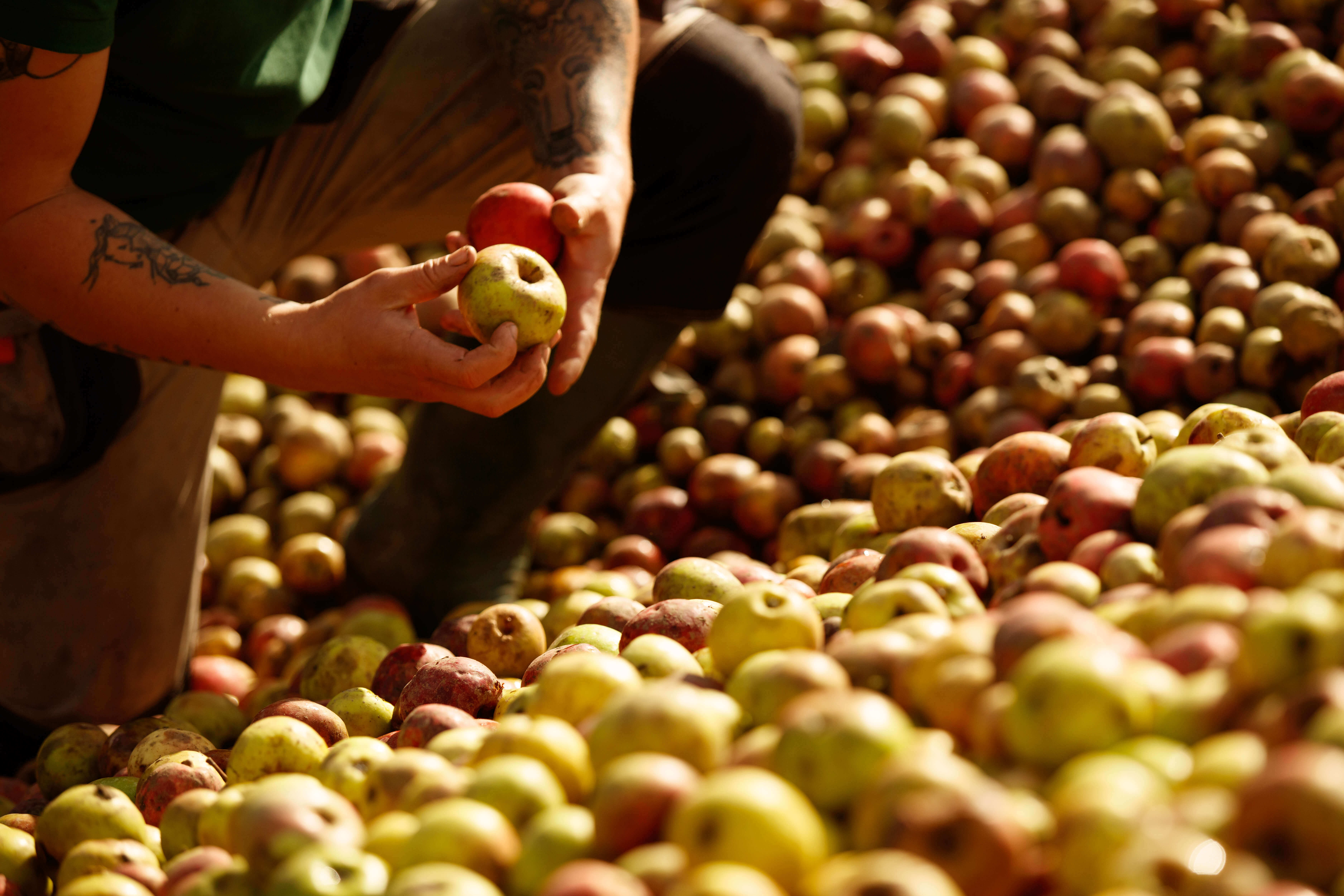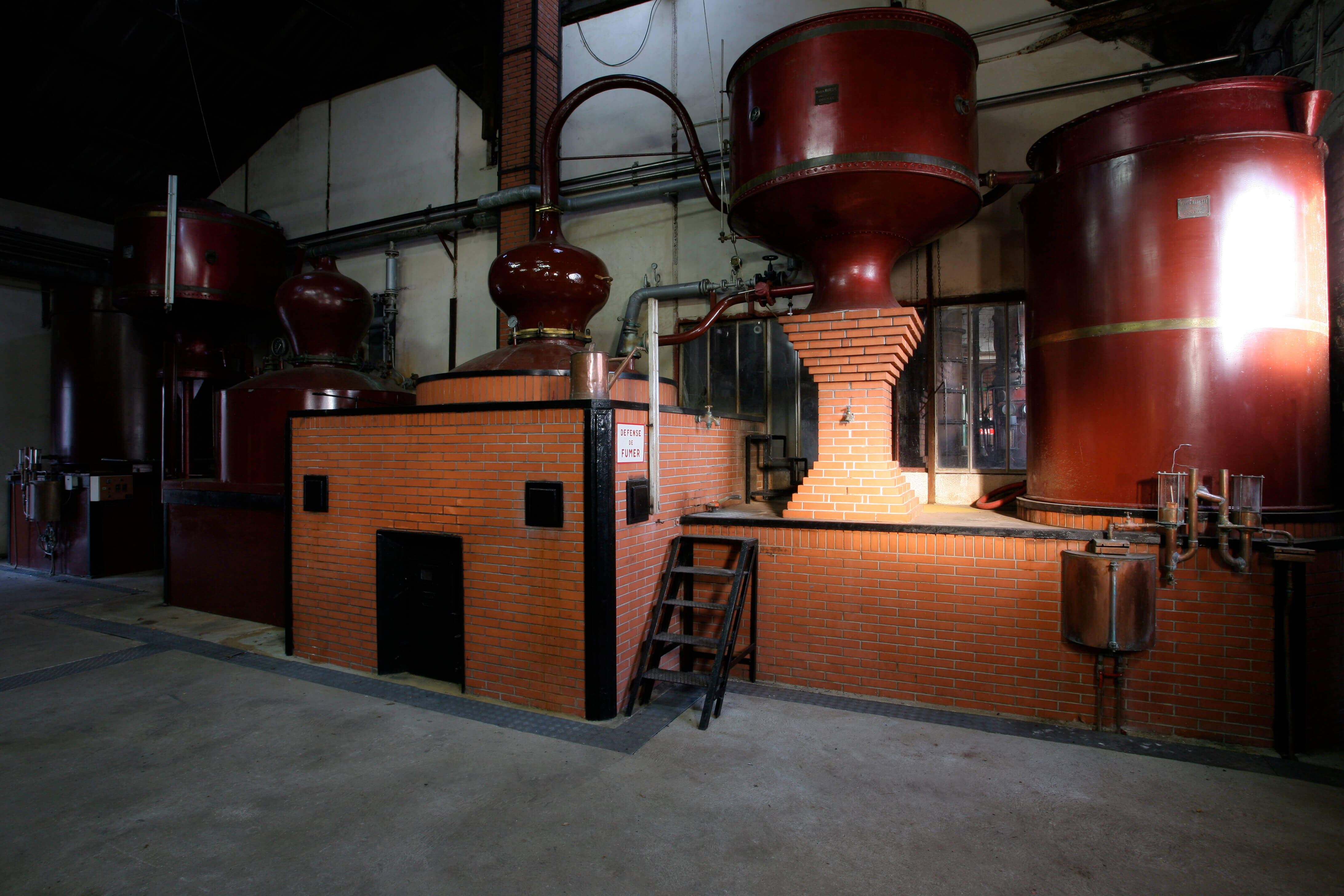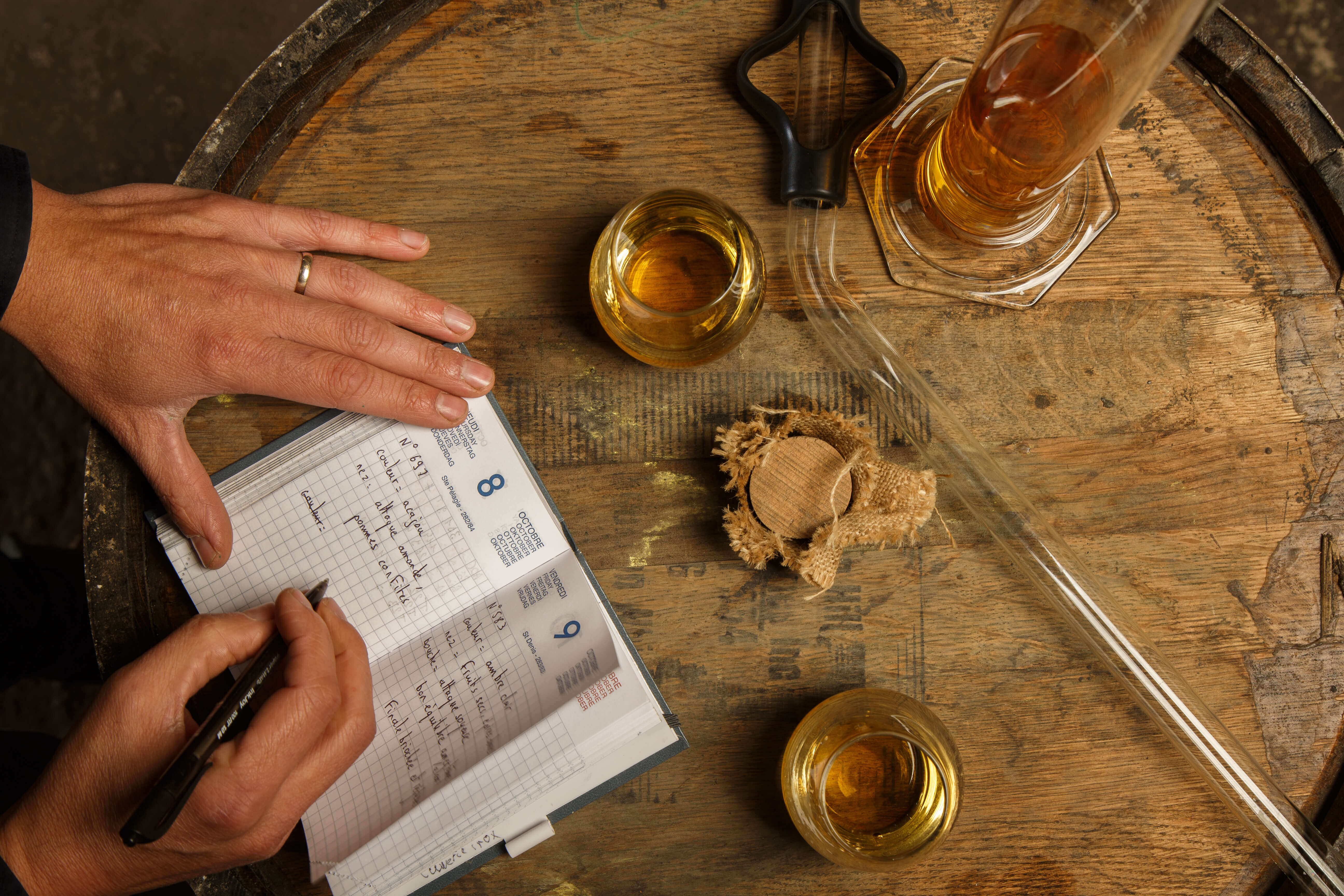The making of Calvados
Apple-based alcohol
To make calvados, everything starts with the apples. Calvados is never made from a single variety of apple. There are four families: bitter, bittersweet, sweet and sour. They are all rich in tannins, and each one brings its own taste note.
After harvesting (from September to December depending on their maturity), the cider apples are washed in clear water, crushed and then pressed in a press to obtain the juice that will later be fermented. Crushed apples were once used to feed livestock. Today, animal feed accounts for only a small part of the market. Apple processing has been modernised, with dehydrated pomace sold and used, among other things, for the Manufacturing cosmetics.


Making cider
The juice from the press is placed in vats where it remains for 3 to 6 months. Under the action of yeasts, it ferments to become cider. This means that the sugar is gradually transformed into ethanol (alcohol). No man-made yeast is added; the yeasts at work are naturally present on the skin of the fruit. The duration of fermentation is random, it depends mainly on climatic conditions.
The milder the winter, the faster the fermentation and vice versa. Although the cider is not intended to be marketed in this form, its quality is essential to ensure the quality of the aromas in the future Calvados. The cellar master decides to start the distillation when all the sugar has turned into alcohol; the cider then contains about 6% alcohol.
Obtaining apple brandy: distillation
From January to June, a certain smell of hot apples floats in the air. After several months in the coolness of the cellar, the cider is finally distilled. This operation consists of heating the cider and then letting it condense so as to recover only the ethanol and part of the aromatic molecules.
There are two distillation methods that are used in the Calvados appellation area :
- The column still is used for AOC Calvados and Calvados Domfrontais: it has the advantage of being quite fast and of working continuously.
- The copper pot still is used for the AOC Calvados Pays d'Auge. In the pot stills, the distillation is done in 2 stages. The first distillation (which lasts between 7 and 8 hours) produces the brouillis (raw spirit), titrating at about 35% alcohol; the second distillation, which lasts longer (between 11 and 12 hours), is used to obtain Calvados. In these traditional pot stills, the distillation is done in 18-20 hours and gives rise to the most prestigious Calvados.


Maturing calvados in oak barrels
The Calvados upon leaving the still contains about 70% alcohol. It then rests for many years in oak barrels in the cellars where it matures slowly where it is cool and dark, in the process becoming enriched with the woody essences essential to the aromatic bouquet of Calvados. During this period, Calvados evolves and becomes richer in aromas. Depending on the length of maturation, Calvados will develop very different profiles. Over the years, the floral and fruity notes fade away in favour of touches of almond, vanilla and dried fruit, followed by ripe fruit, liquorice and woody notes.
BUSNEL Calvados have the particularity of not being very woody. Through his know-how, our cellar master tries to instead highlight the rest of the bouquet. Indeed, when the wood is too marked, it tends to mask the other aromas, limiting the subtleties in the taste.
The art of assembly by the cellar master
When it is finalised, Calvados always comes in the form of a blend (except if it is a vintage).
Blending is a key stage in the making of Calvados, during which the cellar master, cultivating calm and precision, chooses the Calvados to be included in the blend. The art of blending consists in achieving a skilful measuring of doses that will determine the final quality of the Calvados. In order to achieve this optimal result, it is said that Georges BUSNEL and his son would go so far as to blend twelve eaux-de-vie of different ages. It is this know-how and history that have forged the unique qualities of BUSNEL calvados.
Today, the BUSNEL cellar master keeps this ancestral know-how alive, and it is his work that gives rise to the typical Calvados associated with the Maison BUSNEL.
Calvados production does not really come to an end until it is in the bottle. At this stage, the Calvados stops evolving: it can be kept for many years without deteriorating.
Visit the Busnel Distillery during your next weekend in Normandy and discover more of calvados’ secrets! I visit
